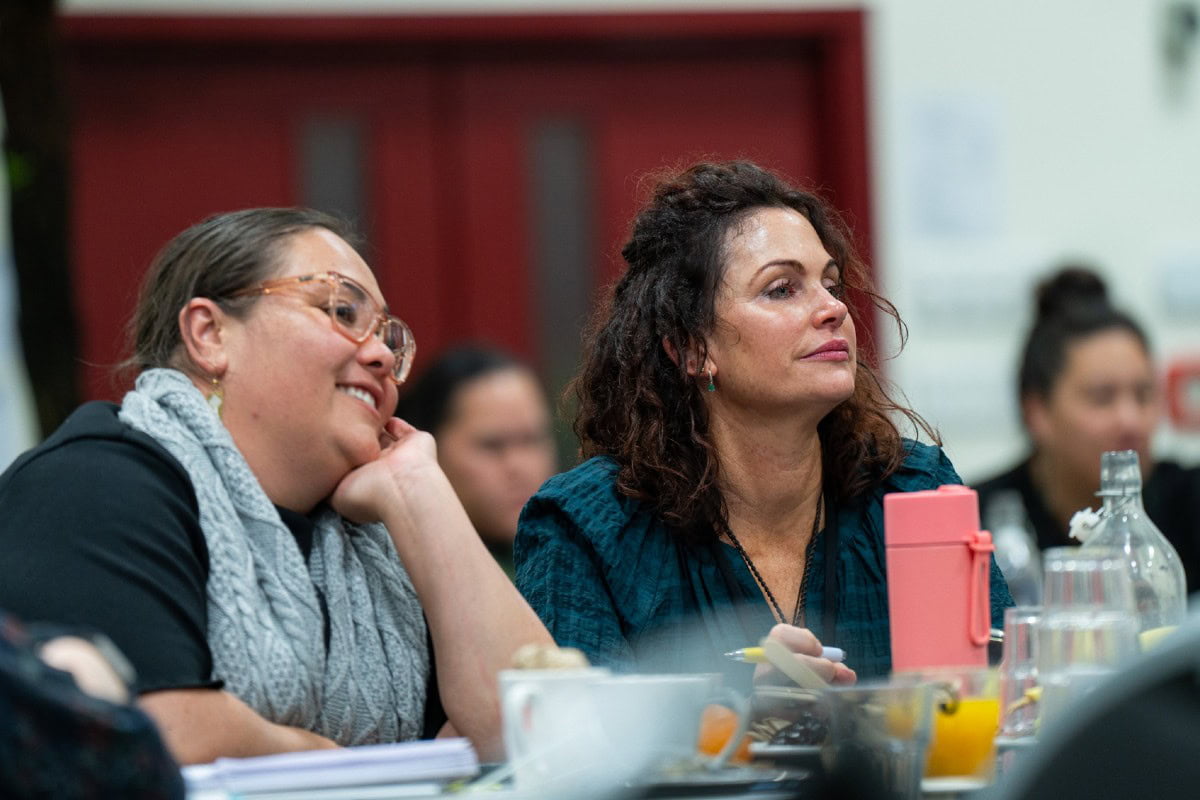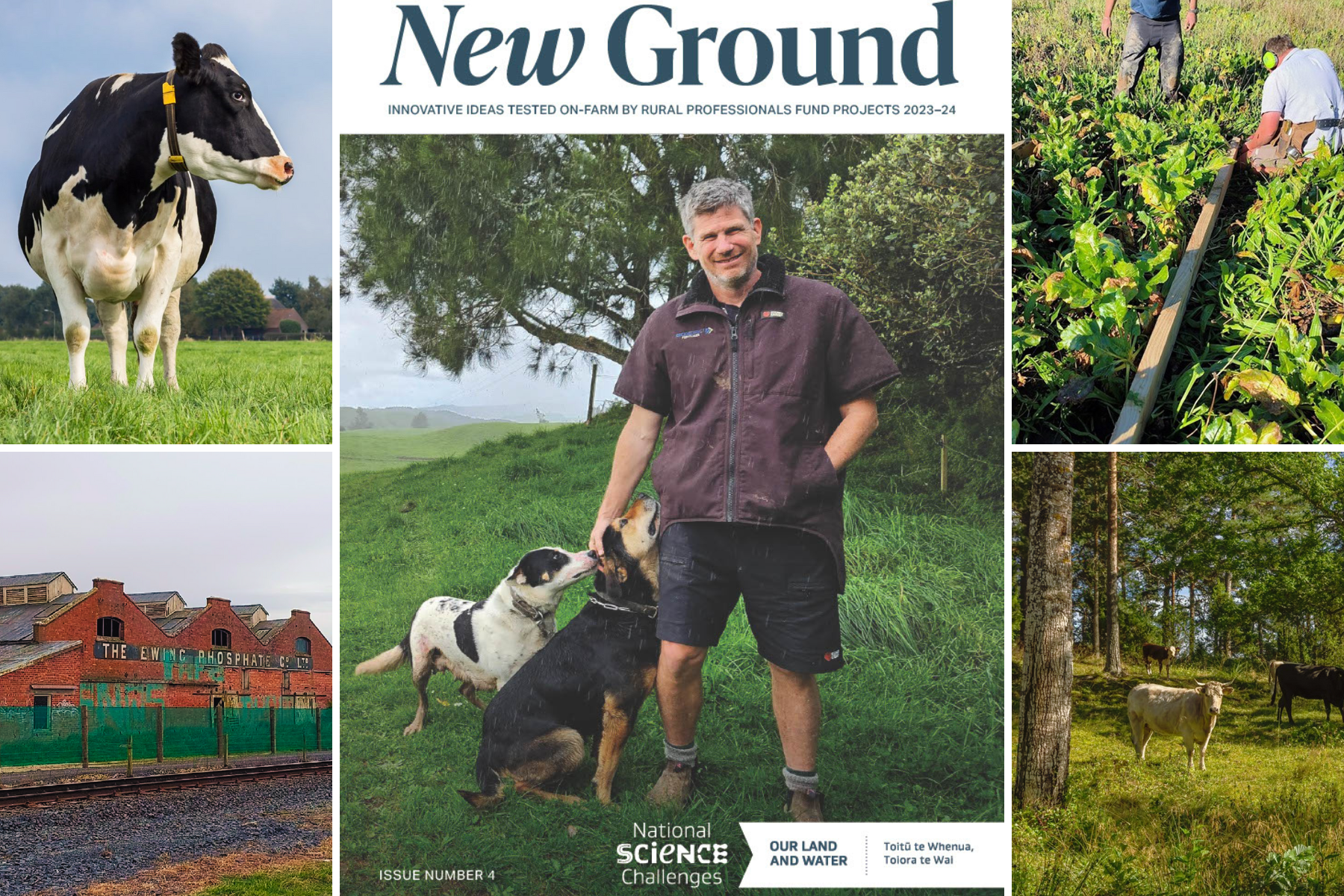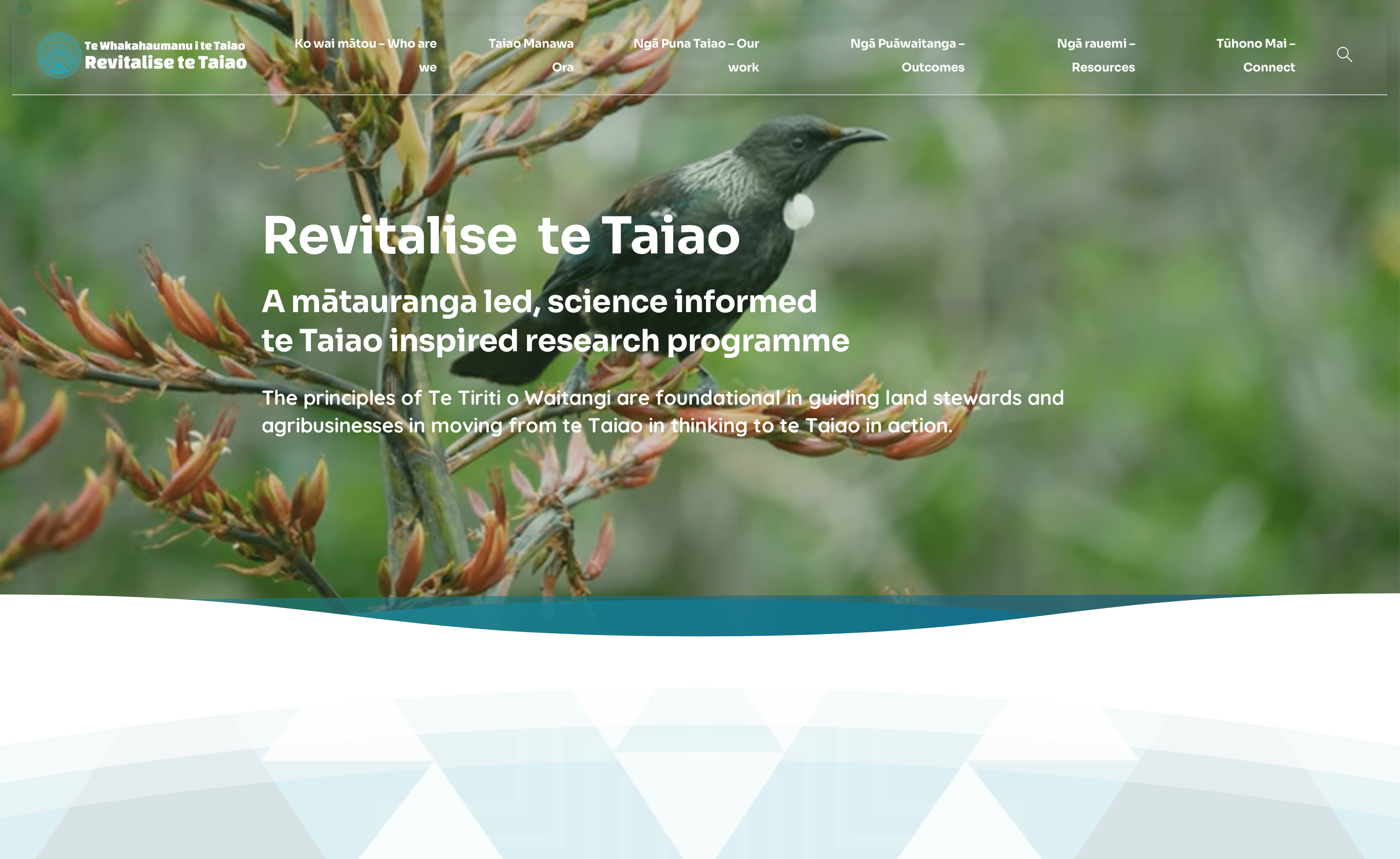E Tipu 2022: Top 10 Takes
E Tipu, the Boma New Zealand Agri-Summit, was held in Christchurch on 21–22 June 2022. The event aimed to contribute to meaningful sector change by connecting growers, innovators, youth, changemakers, technologists, educators, business, and policymakers.
Our Land and Water joined E Tipu: Boma NZ Agri Summit as a channel partner. The two-day event aimed to contribute to meaningful sector change by connecting growers, innovators, youth, changemakers, technologists, educators, business, and policymakers. Here are our top 10 take-outs, themes and quotes from the event.
1. We’re in a pickle / revolution
“Pun intentional,” said chef Dan Shanks (Venues Ōtautahi) when he chose the word “pickle” to understate the backdrop to the conference: concerns about the health of our land and water, our changing climate, new regulations, fast-changing customer expectations, health and wellbeing inequality, war, pandemic.
The world-changing scale of disruption to the food and fibre sector featured in almost every presentation, and in far stronger terms than “pickle”.
Hannah Tucker (director, Balance Point Advisory) described the multiple forms of change as a move from an industrial to a “modern” economy. Arama Kukutai (CEO, Plenty) described our food chain as fragile and strained, amid a revolution equivalent to the 19th-century industrial revolution.
In the Aotearoa context, Jenny Cameron (chief transformation officer, MPI) described the situation as the third major wave of change for our food & fibre sector (the first: when the UK joined the EEC in 1973 forcing us to diversify markets; the second: the financial reforms and removal of government support for agriculture in 1984).
It’s a “trilemma”, she says: the need to simultaneously move to a zero-carbon food and fibre sector, develop new products and value streams, and grow our food and fibre workforce.
Despite the unity of the ‘these are times of extreme global change' message from local and international speakers, there are also signs this message is not getting through, with a land owner in one workshop asking for the ‘why' to be made much clearer for those who are being told to enact change on-farm.
“It was the best of times, it was the worst of times, it was the age of wisdom, it was the age of foolishness, it was the epoch of belief, it was the epoch of incredulity, it was the season of Light, it was the season of Darkness”
– Charles Dickens, A Tale of Two Cities
2. It was the best of times, it was the worst of times
Revolution was again invoked by Ramez Naam (climate tech investor) quoting the memorable opening line of Dickens’ A Tale of Two Cities, set just before the French Revolution.
Naam was speaking of the 160-year period since that book was published, with its massive decrease in global poverty and hunger, and concurrent increasing demand for energy, food, and freshwater – with no obvious end in sight.
Where there are threats, there are also opportunities – and the food and fibre sector in Aotearoa is deeply divided in its focus on each side of the coin.
Jenny Cameron (chief transformation officer, MPI) is responsible for driving delivery of the Fit for a Better World “roadmap” to 2030. She described a sector split in two: one half feeling threatened, undervalued, like no one has their back; the other half energised, excited by opportunities, hopeful about investment, innovation, and cross-sector collaboration.
Over the two-day event, it seemed as if the hopeful, energised half of the sector tended to sit at the top, at the director and executive level, with the resources to participate in change-focussed summits and study trips to Stanford. How to trickle those insights and optimism down to ground-level is a challenge yet to be solved.
There are some problematic narratives feeding the division, said Lain Jager (chair, Te Puna Whakaaronui). Claims that agriculture is a sunset sector, an environmental problem, or already world-leading all have a grain of truth but are not the whole story and are not helping us move forward, he said.
Although we can monitor what is happening globally, said Jager, the unprecedented pace of change makes predicting the future impossible. “Technological change is a threat and an opportunity. The capacity to innovate is critical.”
Deep dive:
- Fit for a Better World 2022 progress update
- More about the opportunities and threats for New Zealand in Te Puna Whakaaronui’s first report: :WELL_NZ
- Future forces: A ten-year horizon for Australian agriculture by Sarah Nolet (CEO, Tenacious Ventures) identifies a mix of opportunity and threat in an Australian context
“By targeting consumers who share our values, we can get win-wins: higher prices for our produce that reward social, cultural and environmental standards.”
– Caroline Saunders, director, AERU
3. Shared values drive value
Firmly in the ‘opportunities’ camp is Dr Caroline Saunders, who shared her goal for New Zealand: “That no product leaves the country without a premium attached to it.” That requires understanding what our food consumers value, which has moved beyond quality and tasty food, to invisible credence attributes like animal welfare, cultural authenticity and organic production.
Providing these invisible values authentically requires close collaboration among partners in the value chain. This should also enable additional value to be delivered back down the chain to producers, ensuring they are fairly rewarded. Sharing the same core values, from producer to consumer, is the key to making this successful.
Janette Barnard (Prime Future) also spoke about the shift from “fiercely independent family producer” to collaborator in the US. While the approach may have helped farms survive, in today’s market those who are most independent are not in the best position – those who collaborate effectively are.
Deep dive:
- The Value Project features case studies from Caroline and colleagues’ value chain research
- Prime Future weekly newsletter
4. Segment your market segments
To make Caroline Saunders’ “nothing from New Zealand should be low-cost” dream come true, our food exporters need to be really, really specific about the consumers they target.
Saunders used a case study of wine in California to show that while in some markets “made in New Zealand” may still conjure up a general sense of value, younger consumers are looking for much more specific evidence of environmental and social responsibility than country-of-origin.
Lain Jager described “very significant growth” of segmentation in international markets: some premium segments interested in health and wellness, some into natural foods, some climate-conscious, others seeking longevity.
Deep dive:
- AERU Consumer Research Portal
- Our Land and Water International Consumer Preferences: Evidence Finder
- The Value Project
“In Auckland, some of our best soils are being planted in houses”
– Hilton Collier
5. We will face resource scarcity
Many foods we rely on are on-track to becoming endangered crops, due to their vulnerability to changes in climate, including those imported Kiwi dietary staples: coffee beans and cacao. And there wasn’t a lot of optimism that we are correcting course.
Arama Kukutai (CEO, Plenty) said he was pessimistic about our ability to halt change below 2°C. Lain Jager also pointed out our failure to hit milestones to limit warming to 2°C, with current impacts of climate change already at the severe end of predictions.
Climate impacts on food security can seem like a far-away problem, more of a concern in countries already facing severe impacts of degraded ecosystems, unequal distribution of food and destabilised systems. Half of the world’s population is malnourished, said Hannah Tucker (Balance Point Advisory), while two billion people have micronutrient deficiencies.
But as Hilton Collier (Pakihiroa Farms, and Our Land and Water governance group member) pointed out, resource scarcity is already here. There are 3000 households in water poverty on New Zealand’s East Coast, where water had to be trucked two hours from Gisborne in the drought that ran from 2019 to 2021. What will happen in other parts of our country if we further deplete our water resources and pollute our aquifers, he asked.
“In a country with so much water, we assume it is an infinite resource we can continue to use for our benefit. What gives us the right to assume we can take a communally owned asset and convert it for private benefit?” he asked, calling out a need to reframe our thinking about water usage.
Mike Jebson (director of resource policy, Ministry for Primary Industries) pointed out that the reliability of water availability has already decreased over the past decade, and will continue to decline due to climate change. The primary sector uses three-quarters of water taken from rivers, he said, and the National Policy Statement for Freshwater Management will impact access to water for productive use.
On a global scale, we’ll need to grow 80% more food with 40% less water, said Ramez Naam, driven by rising demand for meat. “It’s a race between innovation and consumption,” he said, “and it’s not clear which will win”. On the flipside, as a legitimately sustainable producer of meat, climate challenges present market opportunities for New Zealand.
“There is no upper limit to the amount of data we’re going to need for effective AI models”
— Yasir Khokhar (CEO, Connecterra)
6. A data paradox (or two)
The data panel on day two of E Tipu described a data paradox: If we keep data private, we deny its value, but there’s also a risk data will lose its value when it's shared.
“Moving from volume to value requires underpinning data,” said Chris Claridge (Trust Alliance, Potatoes NZ), “but we need to address the business and personal drivers. Everyone wants to capture the value in their business. Self-interested parties are the biggest difficulty we face.”
We have an extensive amount of data, but it isn’t available in a way that allows us all to benefit. Finding the Goldilocks zone that enables organisations to share data at the right level is required.
Yasir Khokhar (CEO, Connecterra) described the power of AI to solve a range of on-farm problems, such as predicting animal health issues with a very high degree of precision – but to develop an AI model for carbon verification, 3–9 years of historical data with over 100 data fields are required. “There is no upper limit to the amount of data we’re going to need for effective AI models.”
This leads to another paradox: There is a lot of data generated on-farm, it's incredibly useful, but farmers hate dealing with it. “We’re going to need to make data management disappear from the job of farmer,” Khokhar said.
Read more:
- Our Land and Water recently funded a project on Incentives for Data Sharing. Join our e-news for updates
7. Te Taiao is guiding a mindset shift
Various strategy documents tell us Aotearoa can respond to the global challenges facing the food and fibre sector in a unique way by embracing the Māori concept of te Taiao – the land, water, climate, and biodiversity that contains and surrounds us all.
To some, it sounds like a strategic buzzword, like the “headwinds” and “tailwinds” that breezed through many presentations. But it’s part of a cultural mindset shift towards systems thinking that is crucial to helping everyone involved in food and fibre in Aotearoa make the right decisions today, for our ancestors to come.
“Our system for creating policy and regulations is broken,” said Hilton Collier. “Rules work for a short period. We need a cultural shift. Future generations will live with our decisions and actions. We are making decisions that our future families have to live with.”
“Taiao is the integrated ecosystem in which we exist. An integrated approach can help us makes sure the land we leave, the water we leave, and everything else we touch is left in a better state for our children, who will be the guardians of the place we leave.“
8. There is money
There is no shortage of investment in food and fibre innovation. Here are some of the numbers thrown around:
- The climate tech revolution is worth $200 trillion – Ramez Naam
- There is $50 trillion looking to invest in ESG innovation. The global biotech market is $290 billion – Wayne Mulligan
- Vertical farming has raised $49 billion, fermentation technology $2.9 billion, cell-based meat cultivation raised $3.8 billion, and plant-based protein has raised $15 billion (and is growing 25% year on year) – Arama Kukutai (CEO, Plenty – which itself recently raised $400 million)
- Cultured meat attracted investment of $1.38 billion in 2021 (compared to $0.55 billion over the previous 5 years in total), with 86 companies launched in the past year (compared to 21 in the past five years) – Dr Laura Domigan (University of Auckland)
And for farmers in New Zealand, we heard encouraging news from Nick Butcher (CTO, CarbonCrop). CarbonCrop’s AI-based technology supports farmers to identify and register post-1990 native forest with carbon markets. It has registered 7000ha with the ETS carbon market, with landowners to be paid $20 million next year.
The Climate Change Commission has a target of 1.5 million ha of new forest, said Butcher, which at a carbon price of $100/T, equals $1.5 billion of potential income for New Zealand land stewards.
Read more:
- Our Land and Water recently funded a project on Retiring Farmland into Ngahere that aims to show how this can be done at less than half the current cost. Join our e-news for updates
9. Keep calm in turmoil
Keep calm and be prepared were the key take-outs from Michael Utkin (CEO, FieldBee), whose story of keeping his agritech company afloat while escaping from Ukraine offers inspiration for everyone dealing with massive complexities and disruption.
In February 2022, Utkin had a 40-person R&D department in Kyiv, Ukraine, serving clients in 50 countries (including New Zealand). No one believed war was truly going to break out, he said, but one week before Russia invaded, FieldBee had a team meeting to decide an evacuation plan – just in case.
The plan was simple: rent a big bus, fill it with petrol, and put it beside the office in case it was needed by employees without personal transportation. They also rented a hotel in west Ukraine and sent a staff member there for a couple of weeks’ holiday. Meeting points were set for those with cars.
A week later, FieldBee evacuated 64 people in 40 hours – employees, their families and even their pets. Many children escaped without seeing a single bomb. The bus then started going back and forth evacuating people, adding another two busses, and evacuating more than 1000 people in March and April.
From the team of 40, there are now 20 working from Poland (from where they’ve even launched a new product), with 20 having returned to Ukraine to reunite with family.
“Everyone is focused on doing the right thing for the right reasons,” said Utkin. “Everyone knows that these are difficult times, but what we are doing is right, and that gives us the energy to go forward.”
“The vast majority of farmers prefer to fail conventionally rather than succeed unconventionally.”
— Janette Barnard (Prime Future)
10. Get a little crazy
All great changes are preceded by chaos and uncertainty, said Wayne Mulligan (CEO, Fomana Capital), quoting Deepak Chopra, and then Seal: “We’re never going to survive unless we get a little crazy.”
We need to be crazy about the markets we want to target, and why we want to target them, said Mulligan. “If they say it can’t happen, good – that’s one less person to compete with.”
Janette Barnard (Prime Future) described the “lunatic farmer” as an archetype of innovation.
“An innovative farmer is seen by their neighbours as a lunatic farmer, not a role model,” said Barnard, with their innovation criticised or unrecognised, even if it is producing visible wealth. “The vast majority of farmers prefer to fail conventionally rather than succeed unconventionally.”
How do we spot a lunatic farmer – who we want to be working with as an innovator? “They get out of their bubble,” said Bernard: reading widely, listening to people their competitors don’t, asking curious questions, learning quickly, and pulling ideas into operation in practical ways. They are experimenters, and every incremental win from an experiment is folded into their system.
Aotearoa can be a “global kainga, a creative home of green innovation,” said Mulligan. “We need to design our companies for ‘Iti-Nui’ – low environmental Impact, large global impact,” he said. “Build your businesses to look after the people and the land.”
Are you a lunatic farmer or a rural adviser with an ‘iti-nui' idea? Apply for funding from our Rural Professionals Fund
Author
 View Our Strategy Document 2019 – 2024
View Our Strategy Document 2019 – 2024



